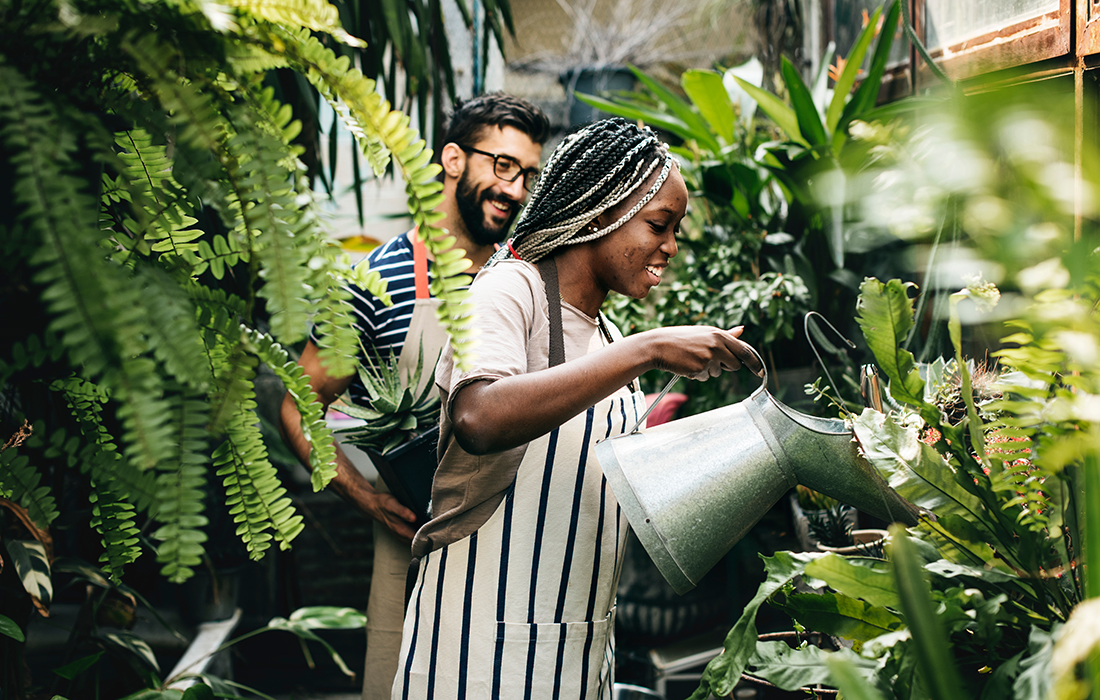It’s one thing to learn how to water your plants—checking soil moisture, sticking to a schedule, and adjusting for dormancy are all skills that take time to hone. However, the type of water you give to your plants can also affect their wellbeing. Is regular tap water good enough or should you pick out the purest type out there?
Tap Water

Tap water—the #1 pick among plant lovers—undergoes a lot of changes before reaching faucets. As it’s mostly extracted from mineral-rich sources, it picks up calcium and magnesium salts when flowing through them. These compounds give tap water its hardness. It’s treated for microbial pathogens by the addition of chlorine or, in recent years, chloramine, to neutralize them. Finally, there might be other impurities present that could affect the health of a plant. Even so, all of these additives are usually present in quantities minute enough to be measured in parts per million. The rule of thumb is: if your tap water is good for you to drink, then it’s good to give to your plants.
Here’s how you can make your tap water more plant-friendly:
- Use washing soda. If you’ve ever noticed white residue on your plant’s foliage and the topsoil, then tap water may be the culprit. The simplest way to soften hard water is to add a small amount of washing soda to it. You can make it yourself by heating baking soda in an oven, but be careful while handling it, as it’s highly alkaline.
- Purchase a water conditioner for aquariums. Even if you don’t have pet fish, you can still benefit from using this formulation as a plant owner. Aquarium water conditioners dechlorinate big volumes of water to render it non-toxic to fish, conveniently making it suitable for plants as well.
- Settle your water. Despite the popular belief, this practice doesn’t make tap water softer or dechlorinate it. Unfortunately, the salts and minerals that harden water won’t settle at the bottom of the container, nor will much chlorine evaporate from it, and chloramine won’t evaporate at all. However, settling tap water is still useful, as it allows for it to warm up to room temperature, helping to avoid the temperature shock from watering plants with cool or cold water.
- Boil your water. Unlike using charcoal carbon filters that just improve the taste and smell of tap water, boiling it actually does the job. This practice reduces tap water’s “temporary hardness” by breaking up bicarbonate salts.
- Install a water softener. If you want to go all in, this is the method for you. By adding a water softener to your plumbing system, you can rest assured that all the water in your house is free from additives and safe for your green friends.
Distilled Water

Distilled water is free from the sulfates, chlorides, carbonates, and other impurities present in regular tap water. Being free of them isn’t necessarily a good thing, though—chlorine, for example, is an essential plant micronutrient that needs to be supplemented. Distilled water also leaches soluble compounds from the soil, worsening its nutrient retention. In general, distillation is an expensive and energy-intensive process, and distilled water is often only available through purchase. That’s not to say that it has no use in plant care. On the contrary, distilled water is often the only option for watering carnivorous plants like sundews and Venus fly traps, since they get overwhelmed by the minerals present in tap water. It’s also great for periodically washing excess salts out of the potting mix.
Rain Water

Rain water is how plants have been hydrating long before human history, so how does it hold up nowadays? This water is naturally soft and appreciated by plants, but there are a few problems with using it. First off, unless your climate is historically rainy, expect the volume of collected rain water to be somewhat meager. Secondly, although rain water is naturally distilled via evaporation, it picks up particulates and gaseous compounds from the air on its way to the ground, so it’s best not to give it to your plants if you live in a heavily polluted area. The latter is also relevant if you wish to use water from melting snow. As an alternative, you can use condensate from an air conditioner if you’ve got one—it’s clean and soft enough to give to plants, and it’s water that would be wasted otherwise.
Other Types of Water

Though the most popular, tap, distilled, and rain water aren’t the only types of water you can choose from. You can also consider these options:
- Aquarium water. This is a little-known trick that we believe deserves more attention. Aquarium water is soft, free of additives, and rich in nutrients. The high concentration of bioavailable nitrogen and phosphorus makes it invaluable for rooting cuttings and feeding air plants. It would, perhaps, be the best option for watering if you didn’t need to have and take care of an aquarium to get it.
- Water from freshwater sources. Ponds and lakes are great sources of water suitable for plants if they aren’t too polluted. Take care not to use water that contains algae, since algal growth may affect the soil quality and the health of your plant.
- Bottled water. This can be used in a pinch, but it’s not sustainable in the long run. Outside of generating plastic waste, the bottles you buy might just contain the tap water you already have—enriched only with microplastics.
There are lots of ways to water your plants, and different types of water all have their applications. Plants vary individually, too, so you might need to use tap water for one and distilled water for another. But don’t worry about all of this too much—as long as you provide them with warm water on a regular basis, your green pets should be happy and healthy.
